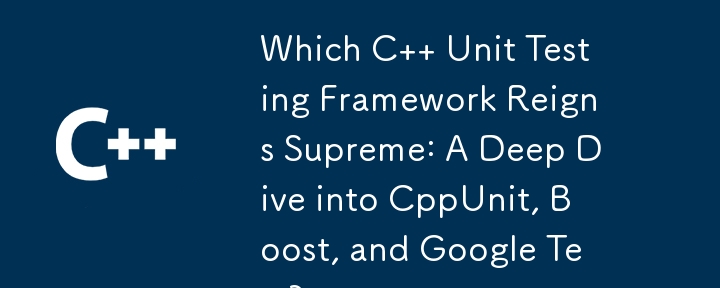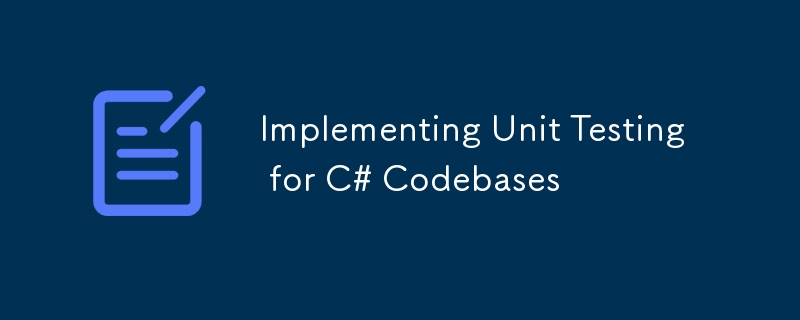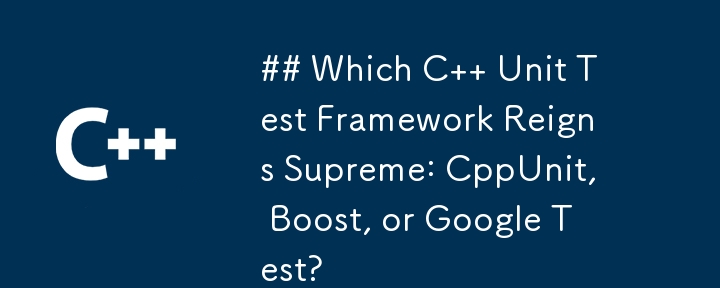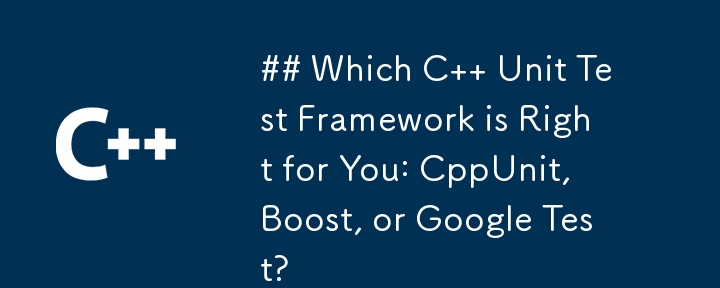Found a total of 10000 related content

How to perform unit tests in Flask
Article Introduction:This article explains unit testing in Flask applications using pytest or unittest. It covers test setup, structure, best practices (mocking, concise tests, edge case handling), framework comparison, and common pitfalls (external dependency testing,
2025-03-05
comment 0
476


Testing Your Tests? Who Watches the Watchmen?
Article Introduction:Whether you are working for a large enterprise, a startup, or yourself, unit testing is not only useful, but is often indispensable. We use unit tests to test the code, but what if our tests are wrong or incomplete? What can we use to test our tests? Who will supervise the inspector?
Key Points
Variation testing is a technique that evaluates its quality with a small number of modified tests and can be used to test the test itself. It involves creating a "variant" or variant of the original test and checking if these changes are detected by the test.
Humbug is a variant testing framework for PHP that can be used to generate code coverage. However, it is PHPUnit-specific and may have problems for users using different testing frameworks
2025-02-14
comment 0
466


How to perform Unit Testing in Java with JUnit?
Article Introduction:Unit testing is crucial in Java projects, and mastering the key steps of the JUnit framework can help you get started quickly. 1. Introduce JUnit dependencies, use Maven or Gradle to add JUnitJupiter's API and Engine dependencies; 2. Write test classes, use @Test annotation to mark the test methods, and simplify assertion calls through static import; 3. Use @BeforeEach, @AfterEach, @BeforeAll and @AfterAll to manage the test life cycle; 4. Use assertEquals, assertTrue, assertNull and assertThrows to verify normal and exception logic.
2025-07-08
comment 0
1037

Testing Java Code Effectively with JUnit Framework
Article Introduction:JUnit is the preferred framework for Java unit testing because of its simplicity, stability and extensive integration. Using JUnit can improve code quality, especially when modifying or extending features. To start writing the first test, you need to: 1. Add dependencies; 2. Create a test class and end with Test; 3. Use the @Test annotation method and write assertions. Practical testing should: cover core logic, maintain independence, use Setup/Teardown, and test exception behavior. Test coverage cannot be ignored, but it is necessary to analyze effective paths in combination with tools such as JaCoCo and connect to CI to ensure continuous integration.
2025-07-11
comment 0
807

What is JUnit?
Article Introduction:JUnit is a testing framework mainly used in Java applications, and its core role is to support automated unit testing. Reasons for using JUnit include: 1. Supports automated testing to facilitate discovering regression problems caused by code changes; 2. Simple writing and define testing methods through @Test annotation; 3. Good integration with mainstream IDEs and build tools; 4. Have extensive community support. JUnit's key components include @Test, assertion methods (such as assertEquals), and annotations for pre- and post-test execution (such as @BeforeEach and @BeforeAll). It is suitable for unit testing scenarios, such as in TDD development, in continuous integration processes, or in regression testing.
2025-06-28
comment 0
872

Implementing Unit Testing for C# Codebases
Article Introduction:Unit testing is an important means to ensure code quality in C# projects and must be implemented. 1. Select the appropriate testing framework: such as xUnit, NUnit or MSTest, and decide based on team habits or project needs; 2. Reasonably organize the test code: establish a test structure according to the main project structure image, and each test method only tests one behavior, keep it concise and clear; 3. Use the Mock framework to isolate dependencies: such as Moq or NSubstitute, simulate external dependencies to ensure test independence; 4. Automatically run tests and integrate CI/CD: configure automatic testing in GitHubActions and other processes to prevent error merging, and can be set to run automatically during local development.
2025-07-10
comment 0
656

From PHPUnit to Go: Data-Driven Unit Testing for Go Developers
Article Introduction:In this post, we'll explore how to bring the PHP unit testing mindset, particularly the PHPUnit framework's data provider approach, into Go. If you're an experienced PHP developer, you’re likely familiar with the data provider model: gathering test d
2024-11-12
comment 0
443

How to perform unit testing in Java using JUnit?
Article Introduction:JUnit is a common framework for Java unit testing. The steps are as follows: 1. Introduce JUnit dependencies, add corresponding configurations to Maven or Gradle; 2. Write test classes and methods, use @Test, @Before, @After annotations; 3. Execute tests and view the results, which can be run through the IDE or command line; 4. Follow test suggestions, such as clear naming, independent testing, and overriding boundary conditions. By mastering these key points, you can quickly get started with JUnit tests.
2025-07-08
comment 0
581

C tutorial on unit testing with Google Test
Article Introduction:To start C unit testing with GoogleTest, you must first correctly install and configure the framework, then write a simple test case verification function, and finally organize the tests through the test fixture to improve maintainability. The specific steps include: 1. Select the installation method according to the operating system, such as Linux using package manager and CMake project to obtain from GitHub, Windows can be compiled with extensions or source code; 2. Write test cases, use TEST macro to define test cases and use EXPECT_EQ to assert; 3. Use the test fixture class to inherit::testing::Test and initialize resources in the SetUp method, and reuse the environment through TEST_F; 4. Reasonably organize the test file structure, and it is recommended to
2025-07-01
comment 0
242

Testing PHP Code with Atoum - an Alternative to PHPUnit
Article Introduction:Atoum: A Fluent Alternative to PHPUnit for PHP Testing
Atoum stands as a contemporary PHP testing framework, presenting a compelling alternative to PHPUnit. Its fluent interface prioritizes readability and simplifies test creation. This tutorial ex
2025-02-10
comment 0
1023

JUnit vs Mockito: Understanding the Differences and Use Cases
Article Introduction:In the field of software development, testing framework is essential for maintaining the quality and reliability of code. For Java developers, Junit and Mockito are the two most commonly used testing tools. Junit is mainly used to build and perform testing, while Mockito simplifies the simulation of dependencies, thereby testing the complex system easier. This article will explore the differences, use cases, and how they complement them to simplify the test process of Junit and Mockito.
Junit Introduction
Junit is a unit testing framework designed for Java applications. It provides a structured method to write and run test cases to verify the units of the code. Junit uses@test,@before and @AF
2025-01-28
comment 0
932

How to perform unit testing in Java?
Article Introduction:Unit testing is crucial to Java code quality. Use JUnit5 as the mainstream framework to introduce dependencies through Maven or Gradle and write test cases; tests should cover normal processes, boundary values, error input and exception handling; use Mockito to simulate external dependencies to avoid real calls; follow clear naming specifications and organizational structures, such as "Method Name_Scenario_Expected Behavior", and place the test class under src/test/java to maintain the package structure consistent with the tested class; insist on writing tests simultaneously in development to improve efficiency.
2025-07-01
comment 0
634

















